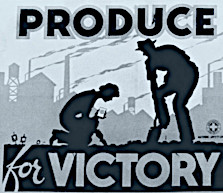Investing thoughts, but HTML testing

My financial and investment musings have been few and far between lately, but while reading Barron's Magazine article this past week, it reminded me that we investors often can look to history for insight.
Listen: ElevenLabs Audio reading
Most of us recognized that inflation rocketed as the world attempted to return to normal … it was unnecessarily high. Way too many decisions were made by the Biden administration that amplified the already heavy stimulus checks and spending … and particularly by their attacking the American energy industry (higher energy costs inflate everything). Bureaucrats extended the free money, loan payment forgiveness, lockdowns, and encouraged the stay-home lifestyle. Russia invading Ukraine and continued global supply-chain issues pinched our economy even more while mostly Democrat leaders, knowing the pandemic was waning, continued to shut down their cities, states and schools. Ok, that’s enough blood pressure elevating political ranting …
The take-away is in looking to history for similarities to how our country shutdown during the Covid19 pandemic was to the injecting of dollars into the economy by government and the spending for World War II. It might be helpful in now studying how we returned to normal after the war (or failed to). Looking at 1945 as World War II ended and then 1946 as the U.S. and Europe (and the world) attempted to rebuild and recover could offer clues.
Historians will generally describe the 1945 recession as a technical recession driven by a transition from a wartime economy to a peacetime economy. You saw a massive drawdown in government spending. That’s analogous to today: The Covid economy really was like a wartime economy, and now you have the withdrawal of a lot of the fiscal and monetary support.
There are other parallels. Both consumption and private investment remained really strong. It was an intense inflationary backdrop, with a big ramp-up in 1944 and a slight cooling off in 1945 before inflation accelerated again in 1946. The unemployment rate went up but topped out around 4%. The increase was also driven by soldiers coming back home, dislocating some of the civilian workers. The interest-rate environment was different; rates were relatively low and flat.
It feels to me like the market was just looking through the recession [which occurred from February 1945 to October 1945]. Yes, we have this kind of technical recession happening, but it is because of the withdrawal of the support. The underlying economy is still pretty healthy. So the market essentially ignored it.
What happened in 1946?
The market wasn’t so great. Inflation came roaring back. But historians also talk about how World War II was the thing that got the economy out of its Great Depression funk, which had lasted for a decade. It has an economic legacy as a restorative element.
From Nicholas Jasinski’s Q and A with Lori Calvasina, head of U.S. equity strategy at RBC Capital Markets
Also while digging for a little more information, I stumbled on a McKinsey and Company artcle from a few years ago by Kevin Sneader and Shubham Singhal:
Two months after Germany surrendered, Britain held a general election. “And now win the peace,” exhorted the Labour Party, which promised massive social and economic change. The words struck a chord and Labour won big, sweeping Winston Churchill out of leadership.
Western Europe, Japan, and the United States did win the peace, enjoying more than two decades of broad-based economic growth that not only raised living standards and brought a better quality of life to their citizens but also helped to fuel global growth ...
Full article or PDF if interested in reading.
